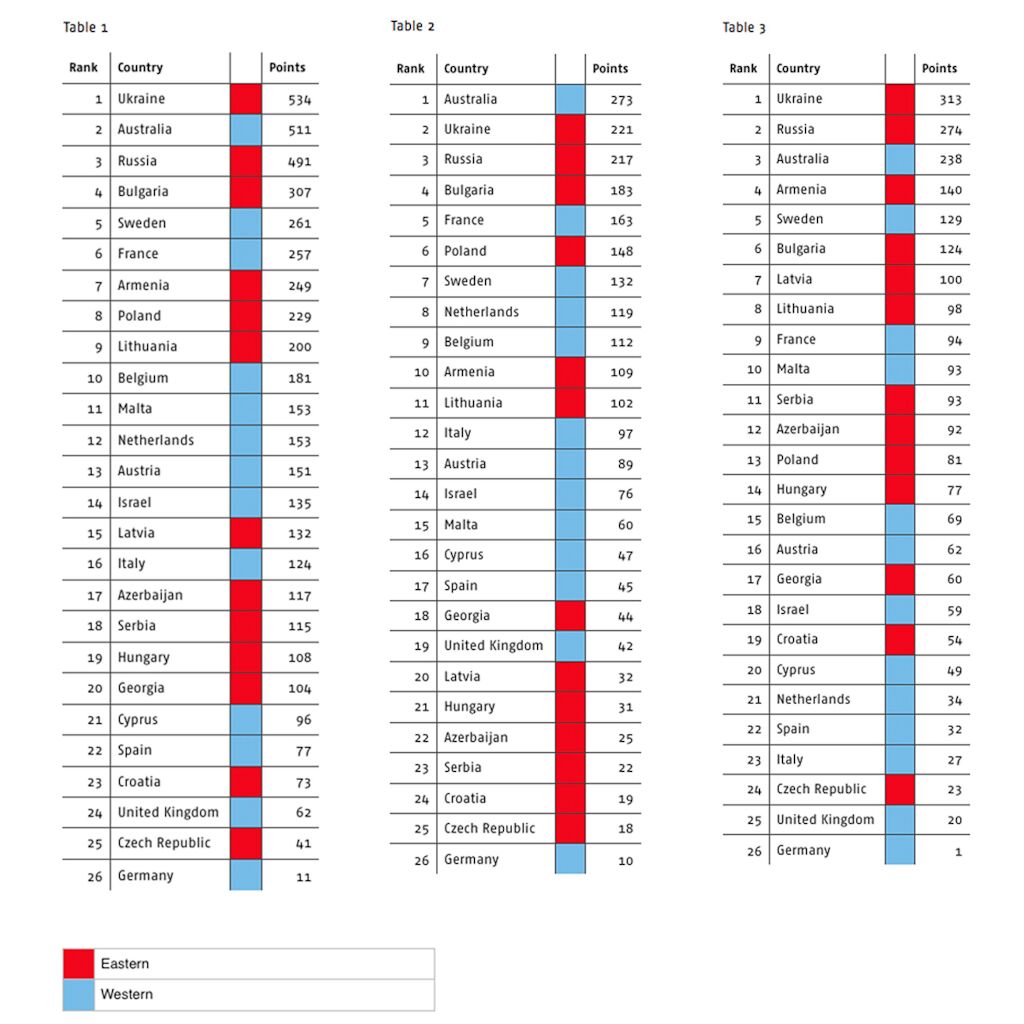As a strategist, I am driven by the urge to understand things. This means not just glancing at an issue superficially but exploring all its facets in depth and examining them from different perspectives. Metaphorically speaking, approaching a new topic is like jumping into water: First you touch the surface, then you dive deeper. While touching the surface, there are various assumptions floating around. These are usually based on existing experience and knowledge — sometimes true, sometimes not. Therefore, testing these assumptions is crucial to gaining a deeper understanding.
Take, for example, the case of the Eurovision Song Contest (ESC). As you might know, Ukraine was the big winner this year. Looking at the total number of votes that Ukraine received one would assume Ukraine had the best performance. However, there are all kinds of rumors about the ESC voting politics and even scientific studies investigating the voting connections between countries (such as this). One popular rumor says that small Eastern European states vote for each other, leaving Western European states with little chance to win. These rumors lead us to the assumption that Eastern countries would rather vote for neighboring nations than nations with the best performance.
Taking my profession seriously, I have to ask myself: is this true? The announcement of the votes during this year’s show did not shed much light on this issue since the televoting results were not announced individually for each country. What we experienced during the show was that Ukraine received 323 televoting points from all voting countries combined — but without any clue from which country these points actually came. Luckily for me, the comprehensive data has been published after the show.
To find out about the voting behavior of the Eastern European states, we have to identify them among all participants. It’s not trivial where to draw the line between East and West, but roughly judging by cultural and geographical criteria, the Eastern European group consists of Albania, Armenia, Azerbaijan, Belarus, Bosnia and Herzegovina, Bulgaria, Croatia, the Czech Republic, Estonia, Georgia, Hungary, Latvia, Lithuania, Macedonia, Moldova, Montenegro, Poland, Russia, Serbia, Slovenia, and Ukraine. Interestingly enough, this is exactly half of the voting countries. The other half is represented mostly by Western European countries (including Australia, but that’s a different story).
Using the glorious functions of Excel, we can look at different versions of the final ranking. Table 1 shows the known official result. Table 2 shows the results if only Western European countries voted, and Table 3 shows the results if only Eastern European countries voted. The countries are marked with color according to the group they belong to.

